|
|
|
Книги издательства «Actar»

|
Издательство: Actar, 2011 Жанр: Прочие Страниц: 672 страницы Загрузил: velik, 11 июля 2013
An explosion of little architectural magazines in the 1960s and 1970s instigated a radical transformation in architectural culture, as the magazines acted as a site of innovation and debate. Clip/Stamp/Foldtakes stock of seventy little magazines from this period that were published in over a dozen cities. Coined in the early twentieth century to designate progressive literary journals, the term little magazine was remobilized during the 1960s to grapple with the contemporary proliferation of independent architectural periodicals. The terms little and magazine are not taken at face value. In addition to short-lived radical magazines, Clip/Stamp/Foldincludes pamphlets and building instruction manuals along with professional magazines that experienced moments of littleness, influenced by the graphics and intellectual concerns of their self-published contemporaries. Beatriz Colomina is Professor of Architecture and Founding Director of the Program in Media and Modernity at Princeton University. |

|
Издательство: Actar, 2012 Жанр: Прочие Страниц: 440 страниц Загрузил: admin, 15 июня 2015
Aleksandr Deineka (1899-1969): An Avant-Garde for the Proletariat is the first exhibition and publication to present this outstanding figure of socialist realism — and, by extension, the historical period from which his work was borne — in a twofold context: the end of the avant-garde and the advent of Soviet socialist realism. It covers Deineka's entire oeuvre, from his early paintings of the 1920s to the twilight of his career in the 1950s, when the dreamlike quality of his first works gave way to the harsh materiality of everyday life, the life in which the utopian ideals of socialism seemed to materialize. Combining Deineka's graphic work, extraordinary posters and celebrated contributions to illustrated magazines and books with his imposing monumental paintings, this catalogue displays a variety of subjects: factories and enthusiastic masses, athletes and farmers, the ideal and idyllic image of Soviet life. |
|